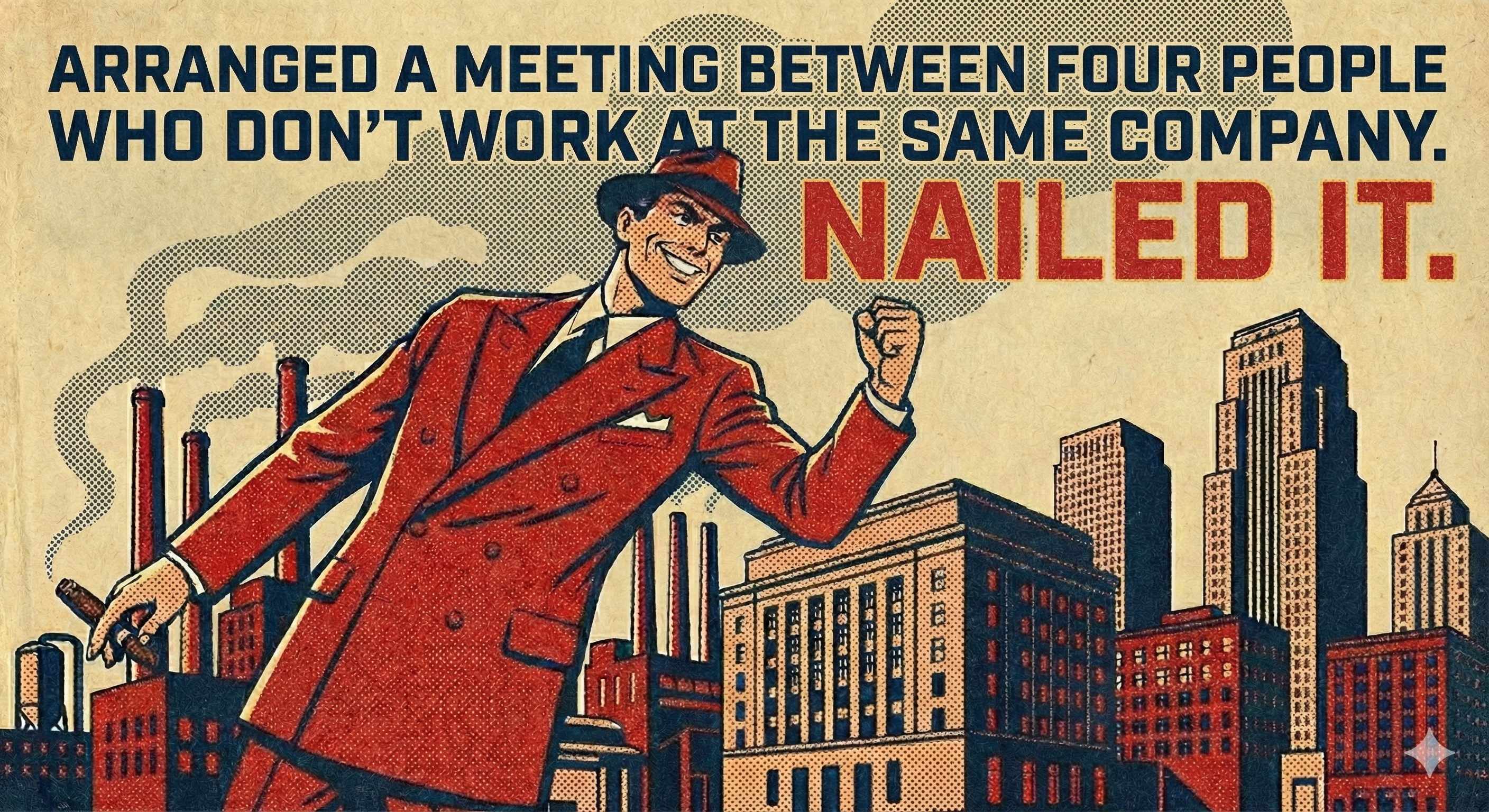I think this is could be my forever meme guy. From Nano Banana…after a lot of banana peeling by human.

I think this is could be my forever meme guy. From Nano Banana…after a lot of banana peeling by human.

Claude Skills are top on my list of “important things no one is talking about” for this year. They’re both an AIPaaS and showing a new programming model and mindset. The educational angle (“View Source”) is a good take.
🔗 What MCP and Claude Skills Teach Us About Open Source for AI
The original is long, so I finished reading it with a summary from one of the discussed robots:
Summarized by AI.
Open source AI is not just about releasing model weights. True innovation comes from an architecture of participation, where developers can inspect, modify, and share small, composable components. Historical breakthroughs like Unix, Linux, and the early web succeeded because they allowed modular contributions—viewing source, remixing, and building on others’ work—rather than requiring deep engagement with the most complex layers of the system.
Anthropic’s MCP (Model Context Protocol) and Claude Skills embody this participatory model. MCP servers let developers give AI systems new capabilities via simple, inspectable interfaces to data, APIs, and tools. Skills are atomic, shareable instructions—bundled expertise that can be read, forked, and adapted. This is the opposite of OpenAI’s GPT “apps,” which live in a closed, app-store-like ecosystem where internals can’t be inspected or reused. Skills and MCP servers are components, not products, and their openness allows a collaborative ecosystem to flourish.
The long-term potential lies in creating “fuzzy function calls”—reusable, human-readable instructions that formalize what LLMs already understand. Just as early compilers and UI toolkits let developers move “up the stack,” MCP and skills will let participants focus on architecture and composition rather than raw code generation. This evolution could preserve mass participation even as layers of abstraction and complexity emerge, as the web did with HTML, CSS, and JavaScript frameworks.
The economic stakes are high. Today’s AI market is extractive: training data is used without recognition, value capture is concentrated in a few companies, and improvement loops are largely closed. MCP and skills could enable participatory markets, where contributions are visible, attributable, and shareable. To reach this future, the AI community must embrace open protocols, inspectable artifacts, new licensing models, and mechanism design that fairly rewards contributors and encourages ecosystem growth.
The future of open source AI will be decided at the interface layer, where ordinary developers and even non-programmers can create reusable skills leveraging their own expertise. If AI development mirrors the open web instead of proprietary app stores, it could become a generative ecosystem that expands opportunity rather than consolidating power.
🤖 What MCP and Claude Skills Teach Us About Open Source for AI - Explores how MCP and Claude Skills could enable a participatory, open-source AI ecosystem similar to the early web, contrasting it with closed, app-store-like approaches.
Summarized by ChatGPT on Dec 3, 2025 at 7:04 AM.